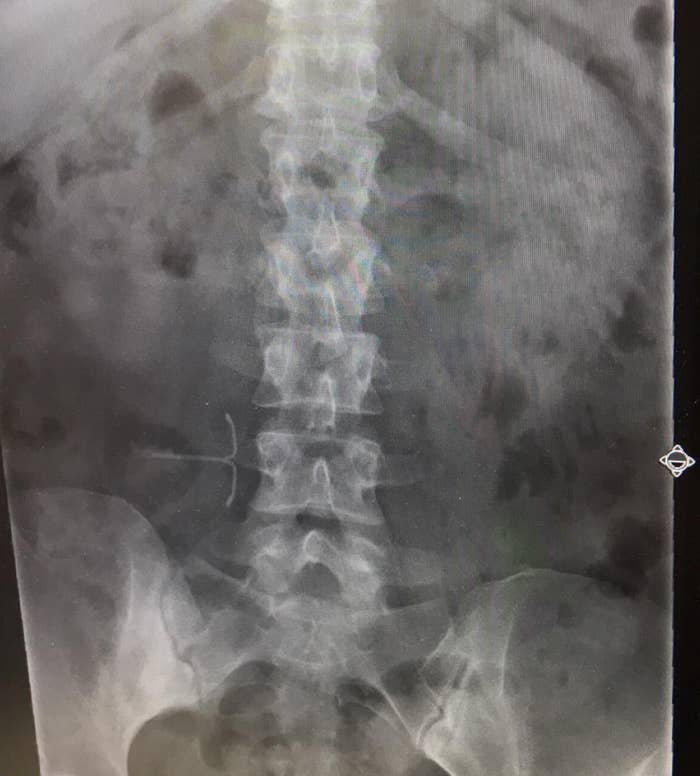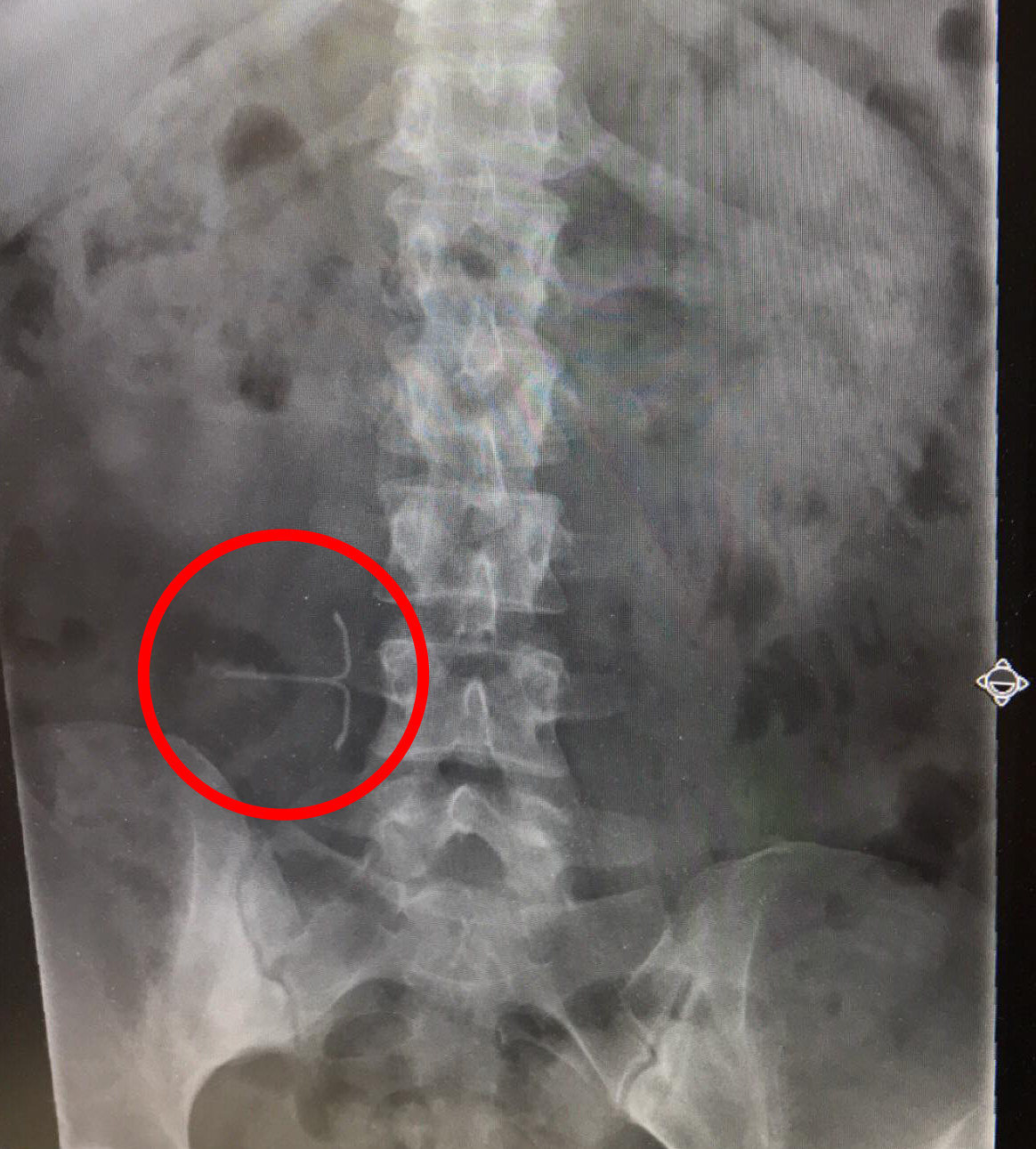Melinda Nichols had an IUD floating around her abdomen for 11 whole years before finally finding it.

An IUD, or an intrauterine device, is inserted into the uterus to prevent pregnancy. Some contain hormones and some don't, but all of them can spend years in the body without needing to be replaced. It's a long-lasting and typically fuss-free way to prevent pregnancy.
That's why Nichols, now 40, opted to get one back in 2007 after the birth of her son.
The first strange thing happened a few weeks later when the IUD didn't show up on an X-ray.
"They couldn’t find it. They told me it fell out," Nichols told BuzzFeed News.
"I asked, 'Wouldn’t I have seen or felt that come out?' and their answer was 'Not necessarily.'"
Life went on as usual until late last year when Nichols went to the doctor with unrelated back pain.
That's when the little sucker showed up on an X-ray.

Right there.

It turns out the IUD had been floating around Nichols' abdomen all that time, and she had zero idea.
Rachel Cannon, an OB-GYN and member of the American College of Obstetricians and Gynecologists, did not treat Nichols but told BuzzFeed News that what happened to Nichols is quite rare.
She said about 1 in 1,000 IUD insertions perforate the uterus, and it's even rarer for the device to make it all the way into the abdominal cavity.
"Typically it’s less common for what we would call the IUD to 'migrate' from a normal position to either the muscle of the uterus or outside the uterus," she said.
Patients who get an IUD often go back six to eight weeks after insertion to make sure everything is normal. If the doctor can't see the string on the end of the device, they do an ultrasound to make sure it hasn't perforated.
"It sounds like, in that case, it was extremely rare that she was seeing health care providers and it still took that long," she said.
An IUD can float around in the wrong place with zero symptoms and is of low risk to the patient, although it does mean it's not working as birth control. However, being a foreign object, Cannon said, there's always a small risk of an infection.
That's why wayward IUDs are surgically removed. Nichols had hers removed laparoscopically on Jan. 30.
Cannon said doctors should always go over the risk of perforation with patients, as well as the risks and benefits of all their birth control options.
"Birth control is really not a one-size-fits-all kind of thing, and patients should expect to hear about all the risks and benefits before making a decision," she said.
